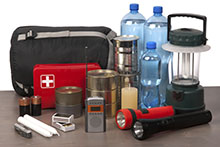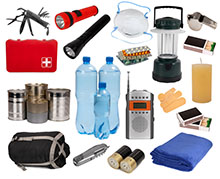Some helpful tips to help keep you safe during an emergency as we talk about National Preparedness Month

Disasters happen at all times, and some with little to no warning. It is very important for everyone to be prepared for any kind of disaster that comes their way. Emergency preparedness is essential for everyone. While an emergency kit for everyone is very handy, wheelchair users should have a slightly different kit for their needs. Here, we have rounded up some disability specific supplies every wheelchair user should have in their kit.

To be extra prepared, there are multiple kits everyone should have. First, having a kit that you carry with you at all times is very important for if something happens while you are away from home. In that kit, you should have a physical copy of all of your emergency health information, such as any allergies to medications, phone numbers for your emergency contacts, any prescriptions you are taking and information about your injury. In this kit you should also have a flash light with batteries and a signaling device, such as a whistle, horn or bell, in case you need to draw attention to yourself. Specifically, for wheelchair users, a patch kit or can of sealant is important to have in case of a flat tire needing repair.
Separate from the carry-on kit, the at home emergency kit should include everything listed above and more. The emergency kit at home should be placed securely and somewhere easily accessible, easy to remember and easy to find. It should also include emergency food and water and gloves. If possible, it is helpful to keep a backup lightweight manual wheelchair.
Keeping a bedside emergency is very handy as well. The kit should include everything listed above, plus any necessary wheelchair equipment such as a transfer belt if needed, gloves and additional medical supplies, such as catheters.
Having an emergency kit in your car is very important, and quite different from the kits above. Having the essentials, such as physical copies of medical information, patch kit or can of sealant, emergency food, a flashlight and more, you should also store road flares, emergency blankets, tools such as a screwdriver, pliers, pocket knife, duct tape, etc., a first aid kit, booster cables and reflective vests.
If you have a service dog, you should also keep emergency kits for them as well. These should include bottled water and pet food, portable water and food bowls, medications (if applicable), physical copy of their veterinary records, an extra leash and collar, blankets, plastic bags, an extra up-to-date ID tag and anything else specific to your dog.
By making these emergency kits, you are taking steps to becoming better prepared in face of a wide range of emergencies.